testbench是一種驗證的手段。首先,任何設計都是會有輸入輸出的。但是在軟環境中沒有激勵輸入,也不會對你設計的輸出正確性進行評估。那么此時便有一種,模擬實際環境的輸入激勵和輸出校驗的一種“虛擬平臺”的產生。在這個平臺上你可以對你的設計從軟件層面上進行分析和校驗,這個就是testbench的含義。
testbench怎么寫
一個最基本的Testbench包含三個部分,信號定義、模塊接口和功能代碼。借用一下特權同學總結的編寫Testbench的三個基本步驟:
1、對被測試設計的頂層接口進行例化;
2、給被測試設計的輸入接口添加激勵;
3、判斷被測試設計的輸出相應是否滿足設計要求。
逐步解決編寫Testbench的這三點:
首先“對被測試設計的頂層接口進行例化”,這一步相對比較簡單,例化就是,但端口多時也夠喝一壺的,而且要分wire、reg,有時會弄錯,別難過,其實可以偷個懶,通過Quartus II自動生成一個Testbench的模板,選擇Processing -》 Start -》 Start Test Bench Template Writer,等待完成后打開剛才生成的Testbench,默認是保存在simulation\Modelsim文件夾下的.vt格式文件。這一步就不多講了,偷懶就挺好。
其次“給被測試設計的輸入接口添加激勵”,一般時序設計必然涉及到最基本的兩個信號——clk、rst_n(時鐘、復位),肯定有童鞋會講可以沒有rst_n,是可以沒有,但何必呢,讓代碼更健壯一點不很好嘛,別鉆牛角尖。下面攻克clk、rst_n的寫法:
首先先講一下timescale,因為想要進行仿真首先要規定時間單位,而且最好在Testbench里面統一規定時間單位,而不要在工程代碼里定義,因為不同的模塊如果時間單位不同可能會為仿真帶來一些問題,而timescale本身對綜合也就是實際電路沒有影響。 `timescale 1ns/ 1ps表示仿真的單位時間為1ns,精度為1ps。
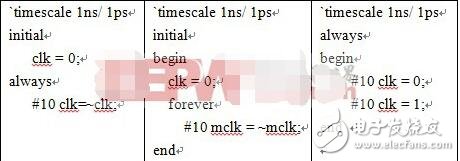
上述三種代碼的目的就是產生系統時鐘,給clk一個初值后,不斷重復執行:每10ns翻轉一次clk,從而生成一個周期為20ns,頻率50MHz的方波信號。第一、二種基本類似,第三種比較簡單,少了一個initial,放在了always里初始化。
三種方法都無一例外地給clk賦了初值,因為信號的缺省值為Z,如果不賦初值,則反相后還是Z,時鐘就一直處于高阻Z狀態。小編同學一般選中第一種,看個人喜歡。
根據復位方式的不同,rst_n一般有兩種寫法:
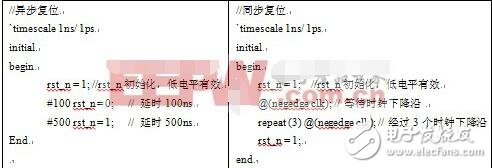
上述兩種代碼的目的基本都是延時復位,但一個異步復位,一個同步復位,用途不同,小編同學一般使用異步復位。
最后“判斷被測試設計的輸出相應是否滿足設計要求”。首先介紹最常用的兩個系統任務函數$stop和$finish。$stop代表暫停仿真后返回軟件操作主窗口,將控制權交給user;$finish代表終止仿真后關閉軟件操作主窗口。其他任務函數如$monitor、$display 、$time、$fwrite等也比較重要,用到的時候再一一介紹。為直觀介紹,使用一個例程來描述,下面是加法器的RTL代碼及Testbench:
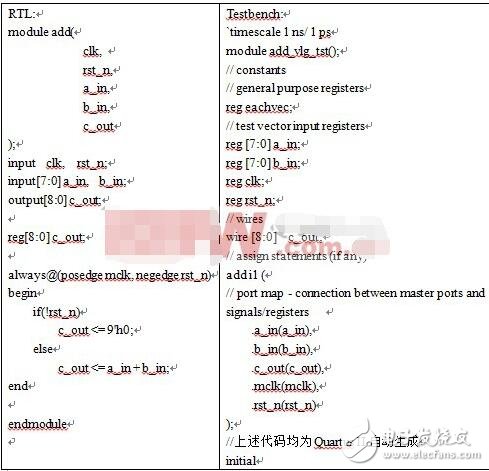
?
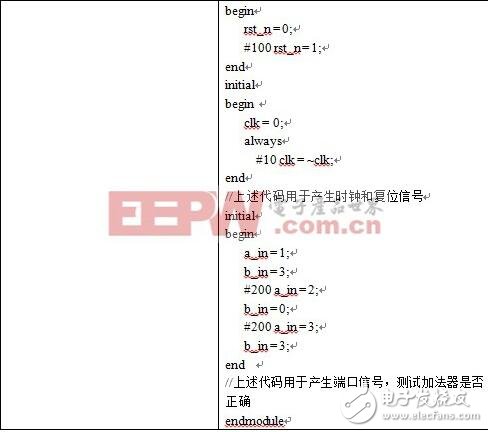
注意了clk、rst_n后,其他端口根據需要相應加測試信號即可,然后把RTL代碼及Testbench添加到Modelsim仿真觀察輸出波形等,以驗證RTL代碼的正確與否,若與預期相符則驗證結束,反之則修改代碼至與預期相符。
好了,Testbench就寫到這里,但沒有結束,實踐是檢驗真理的唯一標準,下一篇將結合Modelsim,以可視化的方式繼續探討Testbench,深入了解仿真的意義。
testbench經典教程VHDL
library ieee;
use ieee.std_logic_1164.all;
use ieee.std_logic_arith.all;
--use ieee.std_logic_unsigned.all;
entity cnt6 is
port
(clr,en,clk :in std_logic;
q :out std_logic_vector(2 downto 0)
);
end entity;
architecture rtl of cnt6 is
signal tmp :std_logic_vector(2 downto 0);
begin
process(clk)
-- variable q6:integer;
begin
if(clk‘event and clk=’1‘) then
if(clr=’0‘)then
tmp《=“000”;
elsif(en=’1‘) then
if(tmp=“101”)then
tmp《=“000”;
else
tmp《=unsigned(tmp)+’1‘;
end if;
end if;
end if;
q《=tmp;
-- qa《=q(0);
-- qb《=q(1);
-- qc《=q(2);
end process;
end rtl;
六進制計數器testbench的代碼
library ieee;
use ieee.std_logic_1164.all;
entity cnt6_tb is
end cnt6_tb;
architecture rtl of cnt6_tb is
component cnt6
port(
clr,en,clk :in std_logic;
q :out std_logic_vector(2 downto 0)
);
end component;
signal clr :std_logic:=‘0’;
signal en :std_logic:=‘0’;
signal clk :std_logic:=‘0’;
signal q :std_logic_vector(2 downto 0);
constant clk_period :time :=20 ns;
begin
instant:cnt6 port map
(
clk=》clk,en=》en,clr=》clr,q=》q
);
clk_gen:process
begin
clk《=‘1’;
wait for clk_period/2;
clk《=‘0’;
end process;
clr_gen:process
begin
clr《=‘0’;
wait for 30 ns;
clr《=‘1’;
wait;
end process;
en_gen:process
begin
en《=‘0’;
wait for 50ns;
en《=‘1’;
wait;
end process;
end rtl;
其實testbench也有自己固定的一套格式,總結如下:
--測試平臺文件(testbench)的基本結構
library ieee;
use ieee.std_logic_1164.all;
entity test_bench is --測試平臺文件的空實體(不需要端口定義)
end test_bench;
architecture tb_behavior of test_bench is
component entity_under_test --被測試元件的聲明
port(
list-of-ports-theri-types-and-modes
);
end component;
begin
instantiation:entity_under_test port map
(
port-associations
);
process() --產生時鐘信號
……
end process;
process() --產生激勵源
……
end process;
end tb_behavior;
-------------------------------------------------------------------
--簡單計數程序源碼
library ieee;
use ieee.std_logic_1164.all;
use ieee.std_logic_unsigned.all;
use ieee.std_logic_unsigned.all;
entity sim_counter is
port(
clk :in std_logic;
reset :in std_logic;
count :out std_logic_vector(3 downto 0)
);
end entity;
architecture behavioral of sim_counter is
signal temp :std_logic_vector(3 downto 0);
begin
process(clk,reset)
begin
if reset=‘1’ then
temp《=“0000”;
elsif clk‘event and clk=’1‘ then
temp《=temp+1;
end if;
end process;
count《=temp;
end behavioral;
-------------------------------------------------------------------
--簡單計數程序,測試文件代碼(testbench)
library ieee;
use ieee.std_logic_1164.all;
use ieee.std_logic_unsigned.all;
use ieee.numeric_std.all;
entity counter_tb_vhd is --測試平臺實體
end counter_tb_vhd;
architecture behavior of counter_tb_vhd is
--被測試元件(DUT)的聲明
component sim_counter
port(
clk :in std_logic;
reset :in std_logic;
count :out std_logic_vector(3 downto 0)
);
end component;
--輸入信號
signal clk:std_logic:=’0‘;
signal reset :std_logic:=’0‘;
--輸出信號
signal count :std_logic_vector(3 downto 0);
constant clk_period :time :=20 ns; --時鐘周期的定義
begin
dut:sim_counter port map(
clk=》clk,reset=》reset,counter=》counter
);
clk_gen:process
begin
clk=’1‘;
wait for clk_period/2;
clk=’0‘;
wait for clk_period/2;
end process;
tb:process --激勵信號
begin
wait for 20 ns;
reset《=’1‘;
wait for 20 ns;
reset《=’0‘;
wait for 200 ns;
wait; --will wait forever;
end process;
end;
--激勵信號的產生方式
--1.以一定的離散時間間隔產生激勵信號的波形
--2.基于實體的狀態產生激勵信號,也就是說基于實體的輸出響應產生激勵信號
--兩種常用的復位信號
--1.周期性的激勵信號,如時鐘
--2.時序變化的激勵型號,如復位
--eg.產生不對稱時鐘信號
w_clk《=’0‘ after period/4 when w_clk=’1‘ else
’1‘ after 3*period/4 when w_clk=’0‘ else
’0‘;
--eg.產生堆成時鐘信號,process語句
clk_gen1:process
constan clk_period := 40 ns;
begin
clk=’1‘;
wait for clk_period/2;
clk=’0‘;
wait for clk_period/2;
end process;
如果自己不想寫這些testbench的這些固定格式,可以在SIE里自動生成testbench文件的模板
步驟:New Surce -》 VHDL Test Bench, 然后才會生成testbench
自動生成的testbench模板格式如下:
-- Copyright (C) 1991-2008 Altera Corporation
-- Your use of Altera Corporation‘s design tools, logic functions
-- and other software and tools, and its AMPP partner logic
-- functions, and any output files from any of the foregoing
-- (including device programming or simulation files), and any
-- associated documentation or information are expressly subject
-- to the terms and conditions of the Altera Program License
-- Subscription Agreement, Altera MegaCore Function License
-- Agreement, or other applicable license agreement, including,
-- without limitation, that your use is for the sole purpose of
-- programming logic devices manufactured by Altera and sold by
-- Altera or its authorized distributors. Please refer to the
-- applicable agreement for further details.
-- ***************************************************************************
-- This file contains a Vhdl test bench template that is freely editable to
-- suit user’s needs .Comments are provided in each section to help the user
-- fill out necessary details.
-- ***************************************************************************
-- Generated on “03/13/2011 20:05:04”
-- Vhdl Test Bench template for design : cnt6
--
-- Simulation tool : ModelSim (VHDL)
--
LIBRARY ieee;
USE ieee.std_logic_1164.all;
ENTITY cnt6_vhd_tst IS
END cnt6_vhd_tst;
ARCHITECTURE cnt6_arch OF cnt6_vhd_tst IS
-- constants
-- signals
SIGNAL clk : STD_LOGIC;
SIGNAL clr : STD_LOGIC;
SIGNAL en : STD_LOGIC;
SIGNAL q : STD_LOGIC_VECTOR(2 DOWNTO 0);
COMPONENT cnt6
PORT (
clk : IN STD_LOGIC;
clr : IN STD_LOGIC;
en : IN STD_LOGIC;
q : OUT STD_LOGIC_VECTOR(2 DOWNTO 0)
);
END COMPONENT;
BEGIN
i1 : cnt6
PORT MAP (
-- list connections between master ports and signals
clk =》 clk,
clr =》 clr,
en =》 en,
q =》 q
);
init : PROCESS
-- variable declarations
BEGIN
-- code that executes only once
WAIT;
END PROCESS init;
always : PROCESS
-- optional sensitivity list
-- ( )
-- variable declarations
BEGIN
-- code executes for every event on sensitivity list
WAIT;
END PROCESS always;
END cnt6_arch;
 電子發燒友App
電子發燒友App












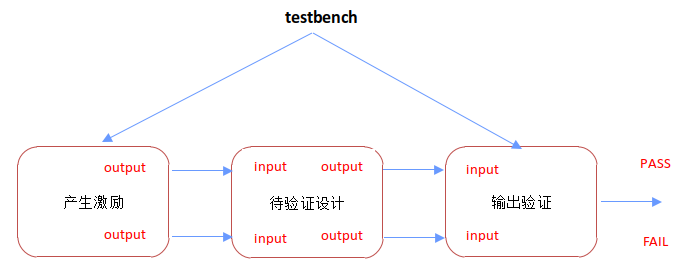
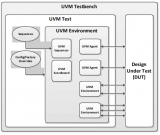

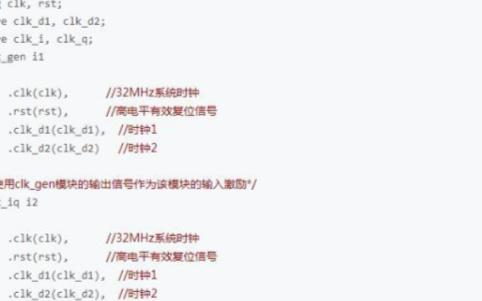

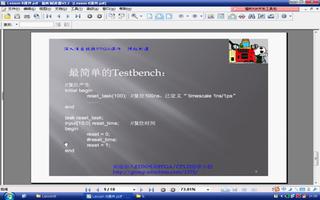
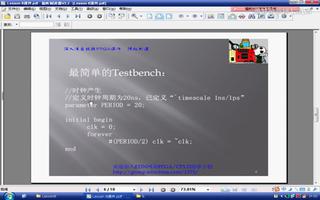











評論